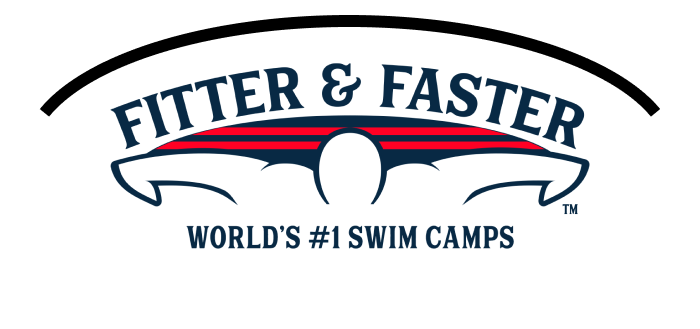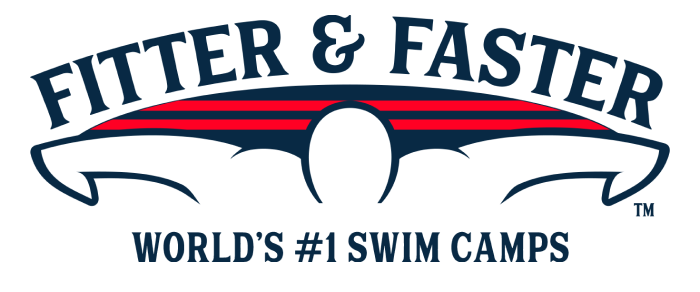Complete Racing Skills For All Four Strokes Swim Camp Series (Ages 10 to 14), Des Moines, IA
Wellmark YMCA
501 Grand Ave,
Des Moines,
IA 50309
- days
- hours
- minutes
- seconds
Introduction
Fitter & Faster is producing a series of swim camps for competitive swimmers ages 10 to 14 at the Wellmark YMCA in Des Moines, Iowa, in 2025 and 2026!
COMPLETE RACING SKILLS FOR ALL FOUR STROKES SWIM CAMP SERIES (Ages 10 to 14)
-> Complete Butterfly & Breaststroke Racing Skills Swim Camp (November 1 & 2, 2025)
-> Complete Freestyle & Backstroke Racing Skills Swim Camp (April 18 & 19, 2026)
Click the “Curriculum Menu” below for details about each swim camp.
✔️ Each session has limited availability to provide a focused, high-quality learning environment.
💡 SAVE when you purchase the “Entire Camp Bundle” for your swimmer.
Select a curriculum below
COMPLETE BUTTERFLY & BREASTSTROKE RACING SKILLS: November 1 & November 2, 2025
Butterfly and breaststroke are powerful short-axis strokes that demand rhythm, precision, and smart racing skills. At this comprehensive camp, participants will refine every detail - from starts, breakouts, and turns to the unique elements that set these strokes apart: the dolphin kick in butterfly and the pullout in breaststroke. Swimmers will leave equipped with everything they need to race faster and with greater confidence in both strokes. This swim camp will be led by Elite Clinician Rafael Miroslaw!
- Session 1 (Saturday, November 1): STARTS, UNDERWATERS & BREAKOUTS: The better a swimmer’s technique is off the starting block, the more speed they will carry into the water. Session 1 of this swim camp will help your swimmer improve their start, underwater dolphin kicking and butterfly breakouts! We will also work on getting the most out of the single allowable dolphin kick for breaststroke. This sequence is not only the fastest part of every race, but it is also the part of the race in which elite swimmers cover the most ground with the most efficiency.
- Check-in: 9:30 AM, Camp: 9:45 - 12:15 PM
- BLOCK STARTS: To ensure an explosive start, a swimmer needs to set themselves up properly on the block. The elite clinicians will work with participants on the optimal positioning of your swimmer’s entire body to allow for a quick reaction time and optimal speed.
- WATER ENTRY: Starting the race with a smooth entry into the water will boost your swimmer's speed and carry the momentum generated off the block or wall. Becoming skilled at the water entry is crucial for any start and significantly contributes to your swimmers' overall race!
- STREAMLINE: The streamline - when done properly - is the fastest a swimmer travels while in the water. Proper streamlines are even faster than underwater dolphin kicking. Even the most elite swimmers in the world are constantly working on improving their streamline. Your swimmer will get tips to improve their streamline and a better appreciation of what they need to do on every single wall in practice and in races.
- INITIATING UNDERWATER DOLPHIN KICKING: Top age group and elite swimmers maximize their streamline on every single lap. They don’t start their underwater dolphin kicking while they’re still achieving maximum speed in their streamline! They also don’t want to start the underwater dolphin kicking after their streamline has begun to slow. Your swimmer is going to learn how to time when to begin their underwater dolphin kicking for both butterfly and that single dolphin kick in breaststroke.
- POWERFUL UNDERWATER DOLPHIN KICKING: There are a few different techniques that swimmers use when underwater dolphin kicking. The common theme of these techniques is that the best swimmers kick up and down with equal power. We will show your swimmer the different techniques that elite swimmers use and teach them how to implement.
- NUMBER OF UNDERWATER DOLPHIN KICKS: Figuring out the optimal number of kicks off each wall, for each race, is essential to fast swimming. Elite swimmers want to spend only the absolute necessary amount of time underwater to establish speed with each length. They want to avoid losing their breath and taking weak kicks.
- BREAKOUTS: Many swimmers unintentionally add movements in their breakouts that reduce speed by creating drag. In this camp, participants will focus on perfecting their butterfly breakout timing to maintain momentum and power into each lap.
- Session 2 (Saturday, November 1): BUTTERFLY TECHNIQUE: We want your swimmer to establish a rhythmic butterfly. Today we will practice various drills and skills that will enable your swimmer to have flowing hips and a long, more powerful butterfly stroke.
- Check-in: 12:45 PM, Camp: 1 - 03:30 PM
- Bodyline: A butterfly race is going to be fastest with a proper bodyline. Even the slightest adjustment of the chin, neck, and/or back can make a huge difference. As swimmers mature in the sport and grow physically, their body position shifts and bad habits can emerge. Participants will learn and practice proper posture and engagement of their core to have a strong foundation for better technique - creating a full-body connection for more hydrodynamic and efficient butterfly strokes.
- Kick: Each butterfly stroke has two kicks to propel the swimmer towards the other end of the pool! If the kicks are properly timed and equally strong, they can positively impact your swimmer’s efficiency and stroke timing! Your swimmer will work on how and when to kick in butterfly for maximum speed.
- Pull: Long and smooth strokes allow swimmers to have a more efficient and fluid butterfly. The pull in butterfly keeps a swimmer accelerating forward. Your clinicians will work with participants to establish an early vertical forearm, “the catch”, enabling the swimmers to put immediate pressure back on the water. Properly completing the stroke keeps the swimmer moving forward efficiently and fast.
- Breath: The timing of the breath in butterfly has a direct relationship on a swimmer’s body position, pull, kick and TIMES! At this camp, we will work with participants on breathing with their chin low to the water... and WHEN to breathe in their stroke cycle so that they develop the most efficient stroke possible!
- Session 3 (Sunday, November 2): BREASTSTROKE TECHNIQUE: Breaststroke is unique—no two swimmers look the same at the elite level. It’s all about reducing resistance, perfecting timing, and finding what works for each individual. We’ll build a foundation and then help each swimmer refine their style for maximum speed and efficiency. No matter your swimmer’s level, this session will strengthen their technique and lead to faster and more efficient breaststroke races… and faster IM’s!
- Check-in: 9:30 AM, Camp: 9:45 - 12:15 PM
- Bodyline: With the most drag of any stroke, breaststroke demands constant attention to body position. We’ll work on keeping the head, hips, and spine aligned and moving forward at every point in the stroke—especially during the crucial first strokes off each wall.
- Kick: A strong, powerful kick is key in breaststroke. In every breaststroke kick, the ankles should stay outside the knee. The optimal size of the kick varies by each swimmer and is highly dependent on knee and ankle flexibility. Swimmers who view themselves as “bad” at breaststroke kick often only need to focus on decreasing the size of their kick and they can unlock unknown potential.
- Pull: To have a great breaststroke pull, swimmers need to keep their elbows near the surface of the water and out in front of their shoulders at all times. Once the hands turn in and begin the “recovery” phase they need to move quickly to full extension in front of the body to reestablish bodyline. The pull pattern varies based on a swimmer’s kick. We’ll help swimmers match their pull width and tempo to their natural kick style—maximizing propulsion and efficiency.
- Timing: Elite breaststrokers are constantly tweaking their timing to achieve the ideal combination of power and efficiency. Our clinicians will introduce key drills that help connect the pull, kick, breath, and glide into a smooth, powerful cycle.
- Session 4 (Sunday, November 2): OPEN TURNS, BREASTSTROKE PULLOUTS & FINISHES: Open turns are key in butterfly and breaststroke, and even small tweaks can make a big difference. Since they’re usually learned early, they can be clunky without continued improvement. This camp will focus on making turns smoother and faster, plus we’ll work on breaststroke pullouts, breakouts, and timing the finish—skills that often get overlooked but can help win close races.
- Check-in: 12:45 PM, Camp: 1 - 03:30 PM
- OPEN TURNS: Elite butterflyers and breaststrokers utilize speed from their last lap to create momentum and even more speed at the beginning of the next lap. Their open turns are actually not “turns”, but more like high-speed pivots. Participants in this session will work on these techniques to have much faster open turns!
- MOMENTUM: The fastest swimmers use walls to generate speed and momentum going into the next lap. Outside of the elite ranks, many swimmers stop or slow down while going into the wall, which kills their momentum! This is especially true in fly and breaststroke where strokes are naturally longer and both arms move together. We will work with participants on the intricacies of approaching every wall at top speed and seamlessly initiating their “turn”.
- BREASTSTROKE UNDERWATER PULLOUT: The breaststroke pullout is an important and unique part of every breaststroke race. We will work with participants on minimizing resistance in their pull-outs and establishing maximum speed. The pullout can be used strategically, depending on the distance of the race, to cover more ground before breaking out.
- SINGLE DOLPHIN KICK FOR BREASTSTROKE: Breaststrokers get just one dolphin kick during the pullout and most take it at the very beginning. Your swimmer will work on specific strategy for getting the absolute most out of that single kick.
- BREASTSTROKE BREAKOUTS: Breaststroke breakouts are also a unique and important skill. After the pullout, swimmers need to keep their momentum going, time their rise to the surface just right, and keep their head moving forward—not up—to help bring their hips to the surface and stay in a good line.
- BUTTERFLY & BREASTSTROKE FINISHES: Setting up for a fast finish is a lot like preparing for a strong turn—it all comes down to timing and positioning. In butterfly and breaststroke, where both arms move forward simultaneously, that timing can be especially challenging. At this camp, your swimmer will learn specific techniques to make adjustments and consistently set up for a well-timed, confident finish.
COMPLETE FREESTYLE & BACKSTROKE RACING SKILLS SWIM CAMP: April 18 & April 19, 2026
Freestyle and backstroke share several key characteristics. Both of the “long-axis” strokes rely on the rotation of the hips and shoulders, the use of underwater dolphin kicking, and flip turns. This camp builds on the natural connection between the two strokes to enhance technical development in both. In addition, participants will explore the racing skills that set freestyle and backstroke apart - especially the start and finish - to help your swimmer swim faster and more efficiently in both strokes.
- Session 1 (Saturday, April 18): BLOCK & BACKSTROKE STARTS, UNDERWATERS, AND BREAKOUTS: This session focuses on the fastest part of every race: the start, streamline, underwater dolphin kicking, and breakout. It’s during this sequence that elite swimmers cover the most ground with the greatest efficiency.
- Check-in: 9:30 AM, Camp: 9:45 - 12:15 PM
- Block Starts: A powerful start begins with proper setup on the block. Our elite clinicians will guide participants through full-body positioning to support quick reaction time and maximum speed. A clean, well-timed entry is essential for maintaining momentum from the start into the water. Your swimmer will work on refining their takeoff, body position in the air, and entry to ensure an explosive transition into streamline.
- Backstroke Starts: Like dive starts, backstroke starts rely on strong positioning before the start. Your swimmer will learn how to generate force off the wall without slipping and how to engage their leg drive and core for a fast, clean entry. Emphasis will be placed on body position in the air and a powerful leg kick to carry momentum into their streamline and breakout.
- Streamline: The streamline - when done properly - is the fastest a swimmer travels while in the water. Proper streamlines are even faster than underwater dolphin kicking. Even the most elite swimmers in the world are constantly working on improving their streamline. Your swimmer will get tips to improve their streamline and a better appreciation of what they need to do on every single wall in practice and in races.
- Initiating Underwater Dolphin Kicking: Top age group and elite swimmers maximize their streamline on every single lap. They don’t start their underwater dolphin kicking while they’re still achieving maximum speed in their streamline! They also don’t want to start the underwater dolphin kicking after their streamline has begun to slow. Your swimmer is going to learn how to time when to begin their underwater dolphin kicking.
- Powerful Underwater Dolphin Kicking: There are a few different techniques that swimmers use when underwater dolphin kicking. The common theme of these techniques is that the best swimmers kick up and down with equal power. We will show your swimmer the different techniques that elite swimmers use and teach them how to implement.
- Number of Underwater Dolphin Kicks: Figuring out the optimal number of kicks off each wall, for each race, is essential to fast swimming. Elite swimmers want to spend only the absolute necessary amount of time underwater to establish speed with each length. They want to avoid losing their breath and taking weak kicks.
- Breakouts: Many swimmers unintentionally add movements in their breakouts that reduce speed by creating drag. In this camp, participants will focus on perfecting their breakout timing to maintain momentum and power into each lap.
- Session 2 (Saturday, April 18): FREESTYLE TECHNIQUE: Whether your swimmer is just learning freestyle or already competing at the high school level, it’s never too late to build strong habits. In this session, your swimmer will work on bodyline, rotation, breathing, kick, and pull—five key elements that contribute to an efficient, powerful freestyle.
- Check-in: 12:45 PM, Camp: 1 - 03:30 PM
- Bodyline: A streamlined body position is the foundation of a fast freestyle. Even small adjustments to head, neck, or back alignment can make a significant difference. As swimmers grow and mature, they often develop habits that disrupt bodyline. Your swimmer will learn how to maintain proper posture and engage the core to stay long and hydrodynamic through every stroke.
- Breathing: Efficient breathing is a challenge but critical to maintaining bodyline. Lifting the head too high causes hips to drop and drag to increase. Clinicians will work with participants to keep the head low and horizontal during the breath, using controlled rotation of the neck and body for a smooth, quick inhale.
- Rotation: Freestyle is most powerful when the swimmer rotates around their spine with each stroke. Rotation allows swimmers to use their back and core muscles during the pull, making the stroke stronger and more sustainable. Your swimmer will learn how to glide on one side and initiate rotation as the pulling hand begins its movement.
- Kicking: The kick is the motor of freestyle. Swimmers must drive from the hips and knees with good timing and control. This session will help your swimmer understand how to adjust kick tempo and power to provide speed when they want or need it.
- Pull: Clinicians will teach participants to establish a “high elbow catch,” also known as early vertical forearm, to apply pressure to the water immediately. Swimmers will then work on pushing water directly back towards their feet with sustained leverage, engaging large muscle groups for a powerful finish to each stroke.
- Session 3 (Sunday, April 19): BACKSTROKE TECHNIQUE: While backstroke shares many concepts with freestyle, the actual skill can be much different. In this session, your swimmer will refine bodyline, rotation, kick, and pull specifically for backstroke.
- Check-in: 9:30 AM, Camp: 9:45 - 12:15 PM
- Bodyline: Backstroke bodyline should eliminate unnecessary movement. Even small amounts of bobbing or swaying create drag. Participants will learn to maintain a flat, aligned posture and engage the core to support a strong, stable position in the water.
- Rotation: Unlike freestyle, backstrokers rotate most fully onto their side when their hand is midway through the stroke. Rotation in backstroke is essential for two key reasons. First, to apply power during the pull, the swimmer’s hand must be positioned in front of the shoulder and at least a few inches below the surface of the water—something that’s only possible with proper body rotation. Second, rotation helps activate the large muscles of the back as the swimmer drives their hand through the surface and into the catch.
- Constant Motion: Unlike other strokes, backstroke has no built-in glide phase—the arms are always moving. Your swimmer will work on strategies to keep their stroke continuous and efficient, maximizing distance per stroke while maintaining tempo.
- Kicking: Effective backstroke kicking requires generating propulsion in both directions—both the forward and backwards motions. Your swimmer will learn to kick efficiently on their back, using ankle flexibility and consistent drive to support rotation and propulsion.
- Pull: Backstroke pull requires a high elbow catch, but also uses more of the full arm in the pull than any other stroke since the hand is pulls much further outside the body line. We will work on feeling that full pull and engaging the large muscles of the back to generate power.
- Session 4 (Sunday, April 19): FASTER FLIP TURNS & FINISHES: Quick, powerful flip turns and strong finishes can determine the outcome of close races. This session will teach your swimmer how to approach every wall as a chance to build speed and gain an edge.
- Check-in: 12:45 PM, Camp: 1 - 03:30 PM
- Momentum into the Wall: Top swimmers don’t coast into walls—they accelerate. Most age-group swimmers lose momentum approaching turns, but this session will emphasize maintaining speed all the way into the wall. For freestyle, swimmers must use cues on the bottom of the pool like the T to avoid lifting their heads. For backstroke, that means reading the flags, counting strokes, and approaching with confidence. Clinicians will share strategies to build that confidence and consistency.
- Flip Turns: Once the turn is initiated, swimmers must get into a tight, fast rotation. Your swimmer will work on initiating the flip efficiently, maintaining a compact tuck, and putting their body in a position to push off the wall with speed.
- Streamline, Underwater Dolphin Kick, and Breakout Progression: Participants will reinforce and refine the streamline-to-breakout sequence introduced in Day 1, with added emphasis on applying it during turn exits.
- Finishes: Races are often decided in the final few strokes. Your swimmer will learn how to judge the distance to the wall and adjust tempo, so they arrive with a fully extended, high-speed finish. The session will cover strategies for both freestyle and backstroke finishes, starting from about 10 yards out.
SESSION START TIMES FOR ALL SESSIONS:
- Sessions 1 & 3: Check-in 9:30 AM, Camp 9:45-12:15 PM
- Sessions 2 & 4: Check-in 12:45 PM, Camp 1-3:30 PM
SUGGESTED PARTICIPANTS: Our top priority is to provide a world-class learning experience for all participants at all of our camps. This camp has sessions for swimmers ages 10 to 14. Participants will range from one-year of competitive swimming experience to AAAA times and faster. If you are the parent of a swimmer under the age of 10 and would like for your swimmer to be considered this camp, please complete this questionnaire.
ASK QUESTIONS
Swimmers and parents are invited to ask the clinicians questions during a Q&A session. Gain insight into their training regimen, diet and nutrition, and recovery tactics.
WATCH THE CLINICIANS
Observe clinicians swim at full speed and demonstrate a progression of perfectly executed drills to achieve powerful, efficient and fast swimming.
PUT YOUR SKILLS TO THE TEST
Throughout the camp, swimmers will practice what they've learned with some of the world's most elite Swimmer Clinicians and coaches!
Take a photo, get autographs, and chat with your clinicians!
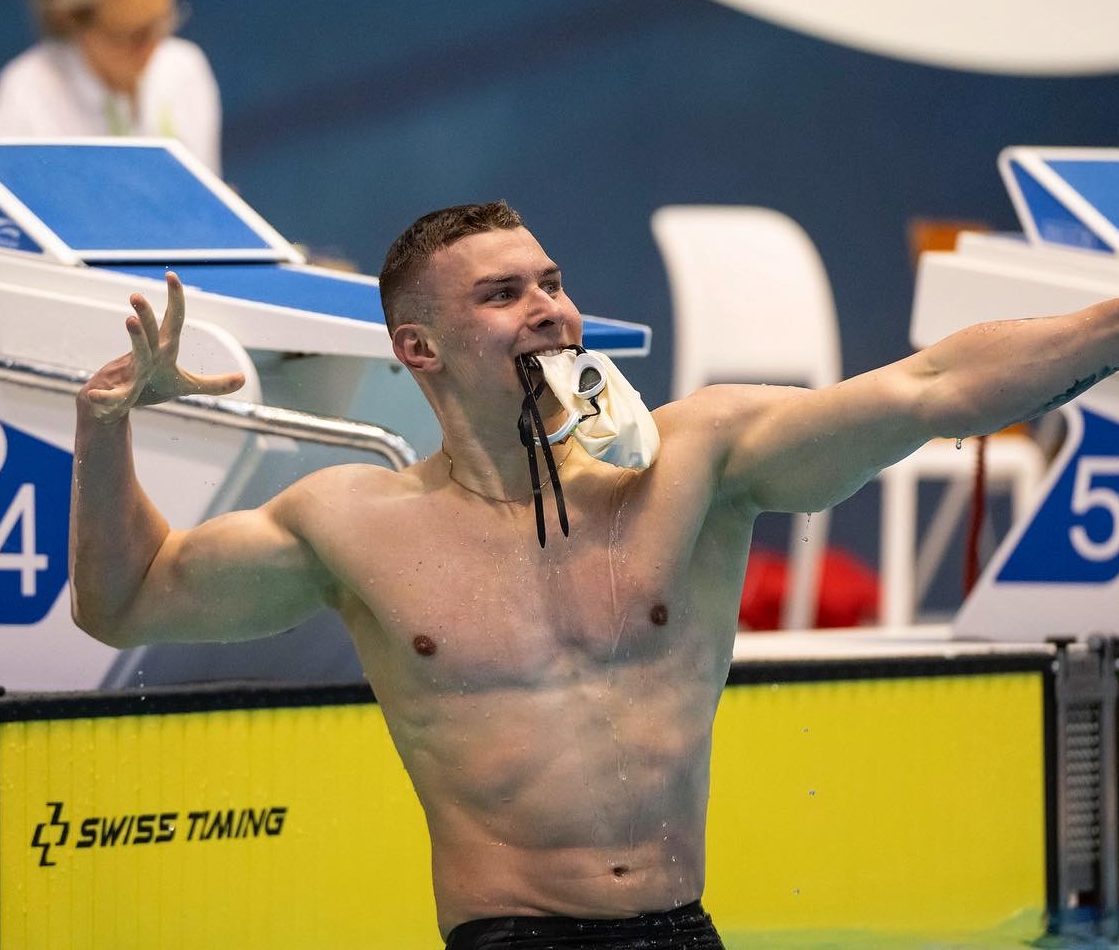
Rafael Miroslaw
Olympian Rafael Miroslaw is a freestyle sprint and mid-distance swimmer who represented Germany at the 2024 Paris Olympics. Rafael’s clinics are technique focused, as he believes technique is essential for growth in the sport, saying “a couple hundredths of a second of improvement can make a difference in a race.”
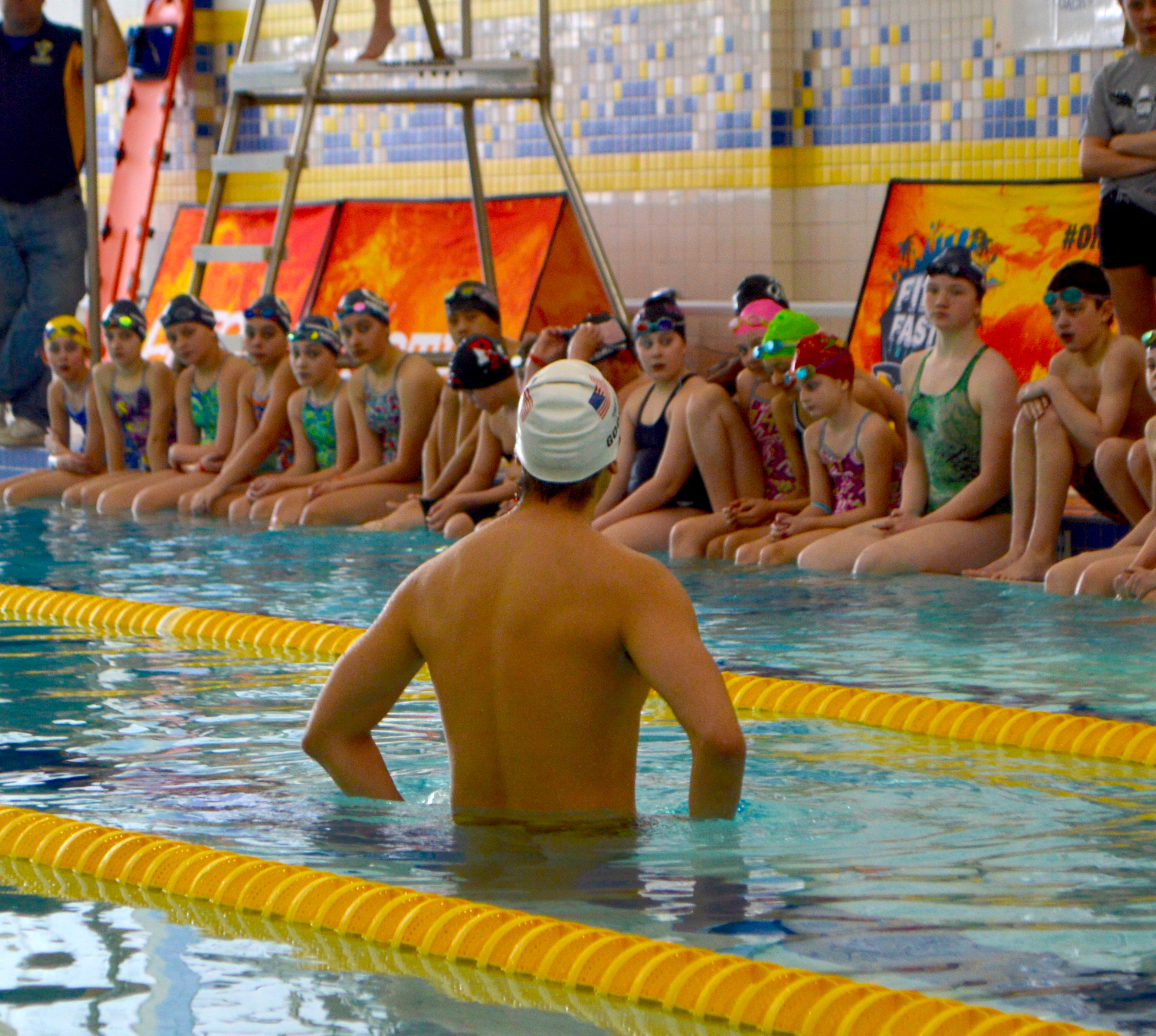
Elite Clinician
Fitter and Faster clinicians are Olympians and National Team members who have achieved at the highest level of the sport of swimming... and who have the unique skill to teach what they know from a technical perspective to swimmers of all ages and abilities.
Inquisitive, Educated Swimmers are Faster Swimmers! Sign up today!


